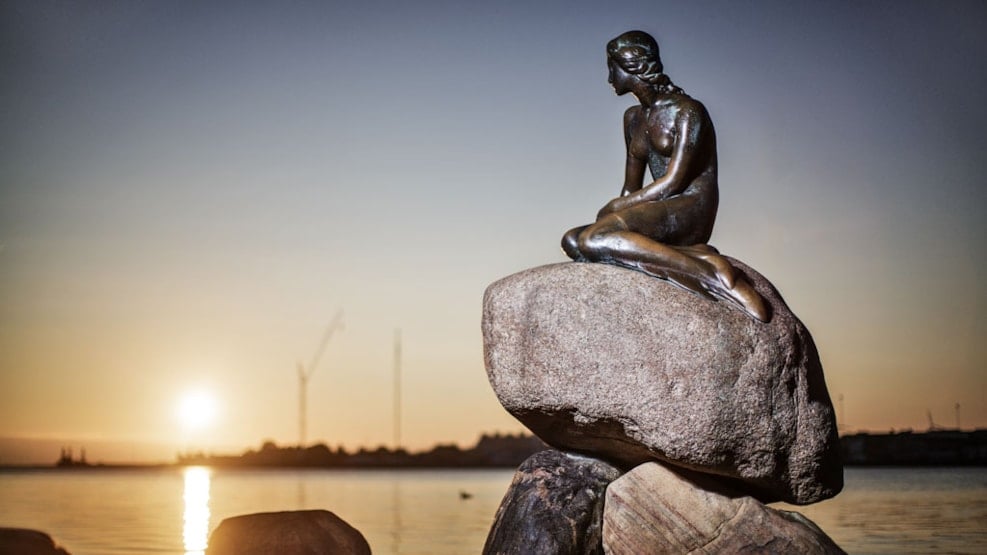
The Little Mermaid
Arguably one of Copenhagen's most iconic tourist attractions, the sculpture of The Little Mermaid was inspired by Hans Christian Andersen’s famous fairy tale.
Unveiled on 23 August 1913, The Little Mermaid was a gift from Danish brewer Carl Jacobsen to the City of Copenhagen. The sculpture is made of bronze and granite and sits in the water at Langelinie Pier.
It was inspired by Hans Christian Andersen’s famous fairytale about a mermaid who gives up everything to be united with a young, handsome prince on land.
Every morning and evening she swims to the surface from the bottom of the sea and, perched on her rock in the water, she stares longingly towards the shore hoping to catch a glimpse of her beloved prince.
Fell in love
Carl Jacobsen fell in love with the character after watching a ballet performance based on the fairy tale at the Royal Danish Theatre in Copenhagen.
The brewer was so captivated by both the fairy tale and the ballet that he commissioned the sculptor Edvard Eriksen to create a sculpture of the mermaid.
Inspired by a ballerina
The sculpture was inspired by ballerina Ellen Price, who in 1909 danced the lead role in the ballet The Little Mermaid at the Royal Theatre.
However, Ellen Price would not model in the nude for sculptor Edvard Eriksen. Thus Eriksen’s wife, Eline Eriksen, posed for the sculpture of The Little Mermaid.
The headless mermaid
The little mermaid has several times been the victim of vandalism. Twice she has lost her head, once the arm was sawn off, and several times she has had paint poured on her. Thankfully, she is always rescued and restored, so she can stay in her place by the water and bid travellers welcome to Copenhagen harbor.